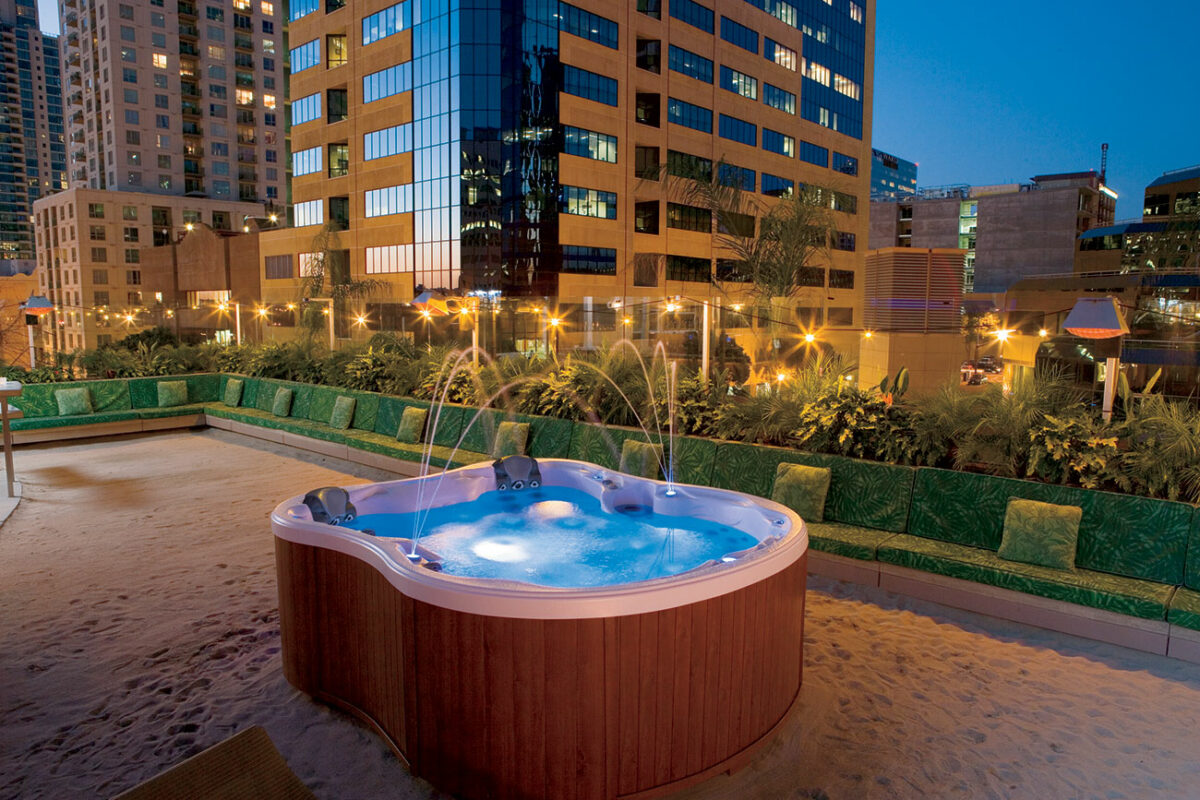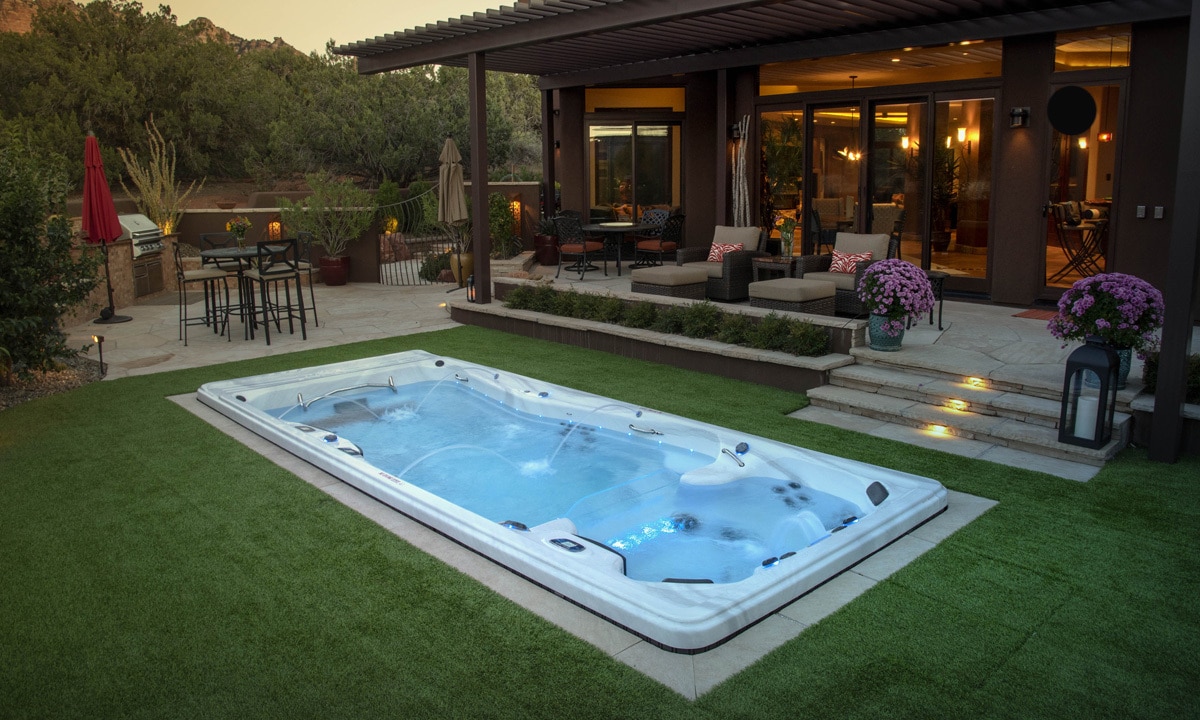Hot tubs are more than just a luxury addition to your home; they are an investment in relaxation, health, and personal well-being. However, to reap the long-term benefits of this investment, proper care and maintenance are essential. Seasoned hot tub owners know that longevity is not just about enjoying the bubbles—it’s about understanding the system and keeping it healthy year after year.
This comprehensive guide aims to equip you, hot tub enthusiasts, with knowledge and practical tips to ensure your little oasis stays pristine and operational for many blissful soaks to come.
Regular Maintenance Practices
Regular maintenance is crucial for the longevity of your hot tub. It not only ensures that the system functions efficiently but also extends its lifespan. Neglecting maintenance can lead to costly repairs down the line. Stay proactive and schedule regular checks to enjoy your hot tub hassle-free for years to come.
Establish a Cleaning Schedule
Keeping your hot tub clean is fundamental. Organic matter and oils can build up over time, causing gunk on the waterline and potentially clogging filters. Ensure you have a routine to:
- Wipe down the interior surface after each use to minimize scum build-up.
- Drain and wipe the tub dry every 2 to 3 months to remove any biofilm that could be forming.
- Vacuum the hot tub weekly to remove debris that can affect water quality and damage pumps.
Water Chemistry Management
Maintaining the proper water chemistry is critical for both your hot tub’s components and for the health of your skin. Invest in a quality testing kit and learn to balance levels of:
- pH, which influences skin comfort and sanitizer efficacy.
- Alkalinity, which acts as a buffer for pH.
- Sanitizers, such as chlorine or bromine, to keep harmful bacteria at bay.
- Shock treatments, to oxidize organic contaminants and maintain clarity.
Filter Maintenance
Filters are your hot tub’s first line of defense against impurities. Without regular cleaning and replacing when necessary, they become ineffective, leading to poor water circulation and strain on the pump.
- Rinse filters every few weeks and deep clean monthly or seasonally.
- Replace filters at least once a year, but more often if you use your tub frequently or have high bather loads.
Seasonal Care Tips
The changing seasons require adjustments to your hot tub care routine. Extreme temperatures and environmental factors can affect your tub differently in summer versus winter.
In the summer, it’s crucial to monitor the water temperature more frequently to prevent overheating and ensure proper chemical balance. Additionally, consider adding a cover lifter to make it easier to maintain your hot tub during the warmer months.
During winter, pay extra attention to protecting your hot tub from freezing temperatures by using a thermal blanket and running the tub periodically to prevent water from freezing. Regularly check the condition of the hot tub cover to maintain insulation and prevent heat loss in colder weather.
Winterizing Procedures
If you live in a cold climate, winterizing is crucial to protect your hot tub from freezing and causing damage to pipes and other components. Some steps include:
- Adding antifreeze as necessary.
- Draining all water and blowing out the plumbing lines with a shop vac.
- Protecting your cover from heavy snowfall to avoid damage.
Summer Maintenance Considerations
In warmer months, the focus shifts to preventing algae growth and maintaining consistent temperature, especially during heat waves. Tips here include:
- Adjusting your cleaning routine to prevent excessive sunscreen and oil build-up that might not be removed by regular chemicals.
- Using a good quality cover to protect from UV rays and airborne dust.
Troubleshooting Common Issues
Even with the most meticulous care, hot tubs can still experience problems. Knowing how to recognize and troubleshoot these issues early can save you time, money, and frustration.
Water Quality Issues
Cloudy water, foaming, or an odor could signal a problem with your water chemistry or filtration. Diagnose and resolve by:
- Double-check your water chemistry and adjust as needed.
- ‘Shocking’ the tub to break down built-up contaminants.
- Replacing your filter if cleaning doesn’t improve water quality.
Mechanical Problems
Mechanical issues are often more complex and may require professional intervention. Be on the lookout for signs such as:
- Unusual noises or vibrations that could indicate a pump or motor problem.
- A drop in temperature consistency signaling a heater issue.
- Water leaks, which can lead to a loss of water and damage to surrounding structures.
Heating Concerns
Without heat, your hot tub is simply a tub, and heating problems are some of the most common issues. To address these:
- Ensure your hot tub’s insulation is intact and effective, especially if you live in a colder climate.
- Regularly check the heating element and replace it if necessary.
- Invest in a quality cover and consider cover wear and tear over time.
Extend Lifespan with Upgrades
Hot tub technology is always evolving, and keeping up with the latest advancements can significantly extend the life of your tub.
Energy-Efficient Options
Energy-efficient pumps, better insulation, and innovative covers are not only good for the environment but for your wallet, too. Upgrading to these options can reduce your operating costs and the overall wear and tear on your system.
Technology Enhancements
Automatic sanitizing systems, remote monitoring, and LED lighting are all great additions that make maintaining your hot tub easier and more enjoyable. They also bring modern functionality to older models, keeping them relevant and functional for many more years.
Structural Improvements
The better care you take of the structure of your hot tub, the longer it will last. Ensuring your tub is well-supported, addressing any small structural issues before they become big ones, and keeping the shell cleaned and sealed are ways to protect the integrity of the vessel.
Conclusion
Caring for your hot tub is a commitment, but the reward of a long-lasting, trouble-free tub is well worth the effort. By adhering to a regular maintenance routine, adapting to seasonal changes, promptly addressing issues, and considering upgrades, you can enjoy the full lifespan of your hot tub.
Remember, while this guide provides comprehensive tips, always consult your hot tub manufacturer’s manual for specific care instructions and, when in doubt, don’t hesitate to reach out to a professional for advice or service. Happy soaking!



